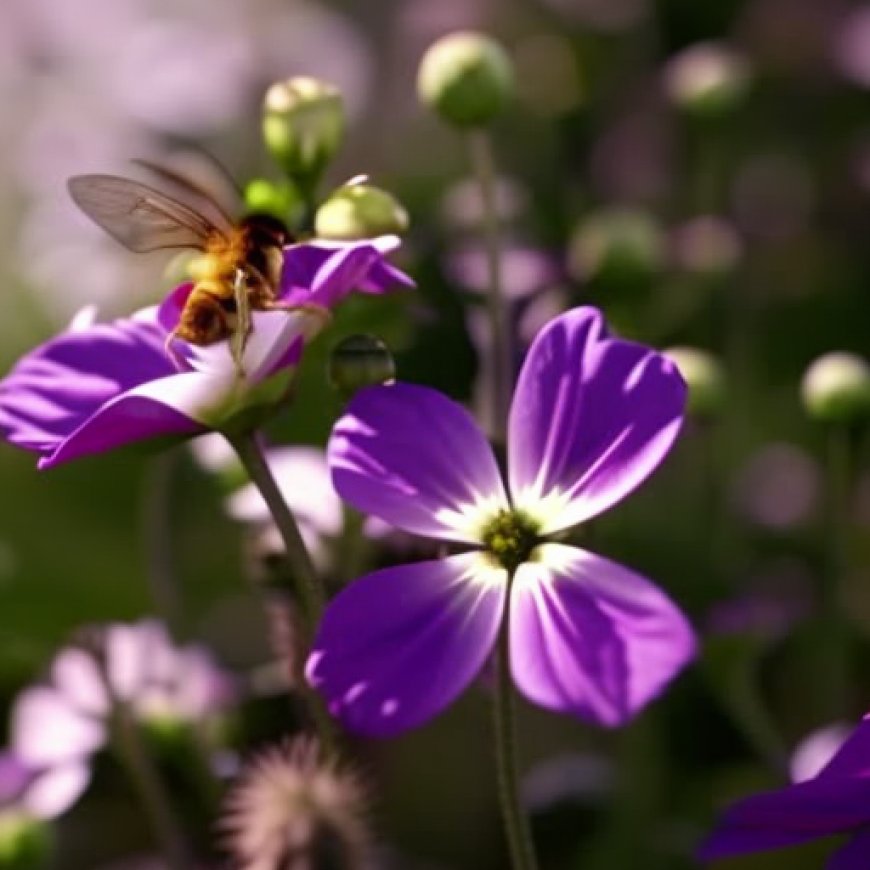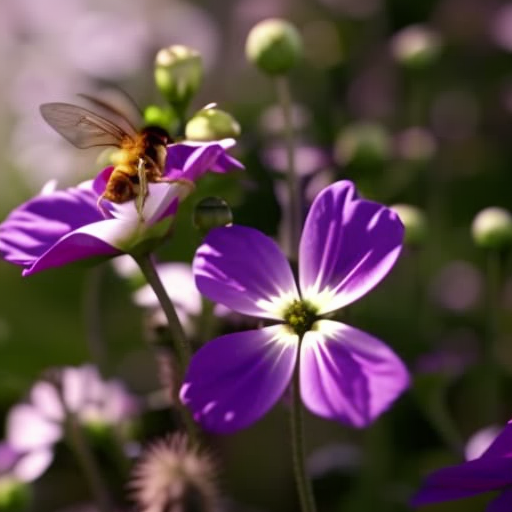How air pollution can make it harder for pollinators to find flowers
How air pollution can make it harder for pollinators to find flowers Science News Magazine


Air Pollution Threatens Night-Blooming Flowers and Pollination
Air pollution poses a significant threat to the pollination process of night-blooming flowers, according to a study published in Science. The research reveals that certain pollutants in the air can destroy key scent molecules emitted by flowers, making it difficult for nocturnal pollinators to detect the fragrance and navigate towards the flowers. This finding highlights the broader impact of air pollution on ecosystems and food security, emphasizing the importance of addressing this issue in the context of the Sustainable Development Goals (SDGs).
Impact of Air Pollution on Flower Fragrances
- Increasing industrialization has led to the release of pollutants such as ozone and nitrogen oxides into the air.
- During the day, sunlight breaks down ozone, but at night, the pollutant accumulates and reacts with nitrogen dioxide to produce nitrate radicals.
- These reactive molecules can affect plant fragrances, potentially disrupting the pollination process.
Research Findings
In order to investigate the impact of air pollution on flower fragrances, researchers collected scent molecules from a pale evening primrose and released the fragrance into a wind tunnel containing hawk moths. The moths were observed easily detecting and tracking the odor in the absence of pollutants.
However, when pollutants like ozone and nitrogen dioxide were introduced, the moths exhibited erratic flight patterns and struggled to locate the scent cues.
Further analysis revealed that two specific aromatic compounds called monoterpenes were the primary cues used by the moths to find the flowers. These compounds were found to break down when exposed to nitrate radicals, significantly reducing the flower’s aroma.
Field Experiment
To test the findings in a natural setting, a field experiment was conducted using real and faux primroses. Some of the faux flowers emitted lab-made primrose fragrance, while others released both the fragrance and chemicals that react in the air to produce nitrate radicals.
The experiment recorded the number of visits by moths to the different flowers. It was found that moths visited real and faux flowers with unsullied primrose scent two to three times a night. However, for faux flowers with polluted fragrances, the average number of nightly visits was less than one.
Implications for Pollination and Ecosystems
The observed impact of air pollution on insect behavior raises concerns about the potential consequences for pollination, crop production, and the health of native plant species. It is crucial for scientists to further investigate how these changes in insect behavior may affect foraging and overall ecosystem health.
Addressing air pollution is essential for achieving several SDGs, including Goal 2 (Zero Hunger), Goal 3 (Good Health and Well-Being), and Goal 15 (Life on Land). By reducing air pollution, we can protect pollinators and ensure the sustainability of our ecosystems and food systems.
SDGs, Targets, and Indicators
SDGs Addressed:
- SDG 3: Good Health and Well-being
- SDG 15: Life on Land
Targets:
- Target 3.9: By 2030, substantially reduce the number of deaths and illnesses from hazardous chemicals and air, water, and soil pollution and contamination.
- Target 15.5: Take urgent and significant action to reduce the degradation of natural habitats, halt the loss of biodiversity, and protect and prevent the extinction of threatened species.
Indicators:
- Indicator 3.9.1: Mortality rate attributed to household and ambient air pollution.
- Indicator 15.5.1: Red List Index (RLI) for species.
The issues highlighted in the article are connected to SDG 3 (Good Health and Well-being) and SDG 15 (Life on Land). The impacts of air pollution on plant fragrances and pollination have implications for human health and the health of ecosystems.
Based on the content of the article, the specific targets that can be identified are Target 3.9 (reducing deaths and illnesses from air pollution) and Target 15.5 (taking action to protect biodiversity and prevent species extinction).
The article mentions the indicator of mortality rate attributed to household and ambient air pollution (Indicator 3.9.1) as a measure of progress towards reducing deaths and illnesses caused by air pollution. Additionally, the Red List Index (RLI) for species (Indicator 15.5.1) can be used to measure the impact of pollution on biodiversity and threatened species.
SDGs, Targets, and Indicators Table:
| SDGs | Targets | Indicators |
|---|---|---|
| SDG 3: Good Health and Well-being | Target 3.9: By 2030, substantially reduce the number of deaths and illnesses from hazardous chemicals and air, water, and soil pollution and contamination. | Indicator 3.9.1: Mortality rate attributed to household and ambient air pollution. |
| SDG 15: Life on Land | Target 15.5: Take urgent and significant action to reduce the degradation of natural habitats, halt the loss of biodiversity, and protect and prevent the extinction of threatened species. | Indicator 15.5.1: Red List Index (RLI) for species. |
Behold! This splendid article springs forth from the wellspring of knowledge, shaped by a wondrous proprietary AI technology that delved into a vast ocean of data, illuminating the path towards the Sustainable Development Goals. Remember that all rights are reserved by SDG Investors LLC, empowering us to champion progress together.
Source: sciencenews.org

Join us, as fellow seekers of change, on a transformative journey at https://sdgtalks.ai/welcome, where you can become a member and actively contribute to shaping a brighter future.







